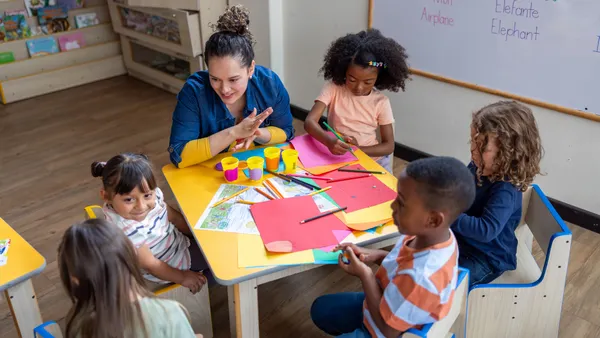Dive Brief:
- Friends School of Baltimore 3rd grade teacher Judy Sandler writes for Edutopia on the benefits of transforming a social studies unit on Native Americans into a semester-long, project-based learning experience that benefits students by providing them more agency and voice in their learning.
- Throughout the project, students study and debate stereotypes about Native Americans, examine their use as sports mascots, and create a "mini-museum" designed to better educate people about those stereotypical depictions of Native Americans.
- Sandler notes that each student undergoes a fair amount of trial and error, confronting "natural consequences" that arise during the project as a result of varying factors — and that they are ultimately assessed during the planning process on metrics like collaboration, creativity, communication and flexibility.
Dive Insight:
Lessons that tie what students are learning to the real world stand to engage them much more effectively than the lectures and rote memorization of old. Being able to touch things, or even to just put them into the context of real-world problems, adds perspective to the material being learned, increasing understanding of its importance.
Of course, some schools are in a greater position to do this as a result of geographic location, as Sandler notes that Friends School of Baltimore is close enough to make a visit to the Smithsonian's National Museum of the Native American in Washington, DC. Technology has also bridged that gap to some extent, with schools now capable of making "virtual visits" to museums and other locations, connecting students with experts via Skype or letting them see exhibits from a distance through tools like Google's Expeditions.
For some schools, adopting these practices may take a bit of creativity on educators' parts, but they can make a significant difference when it comes to student success.









